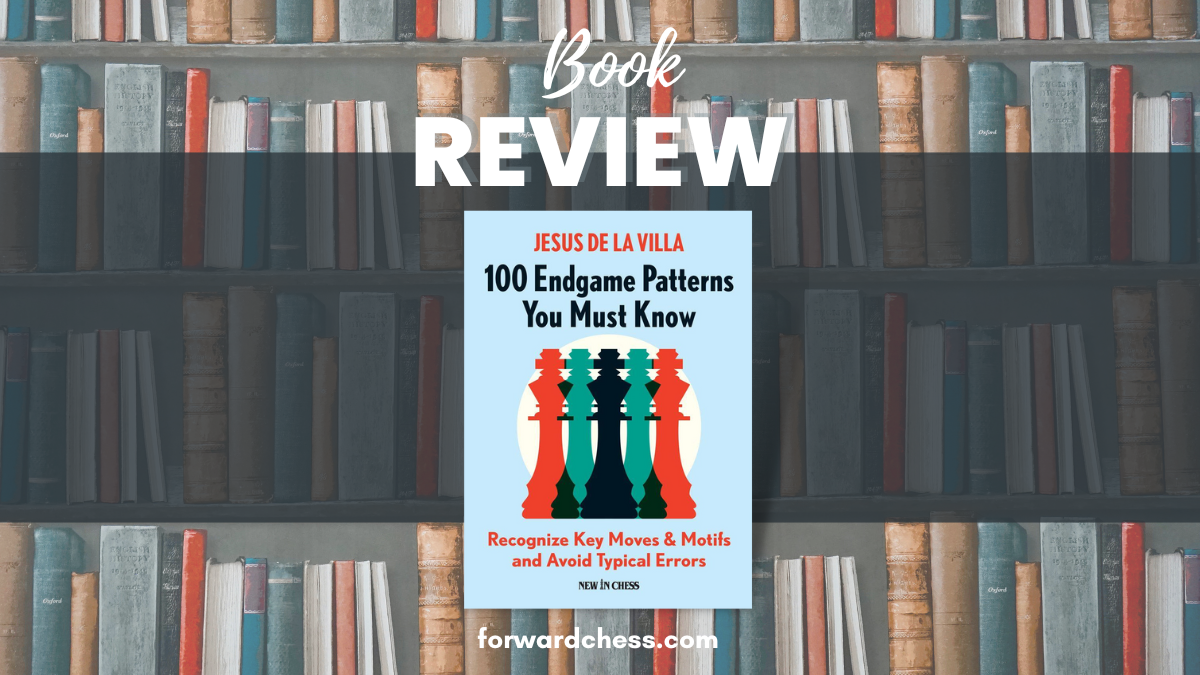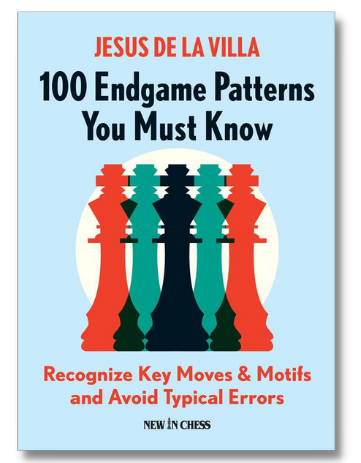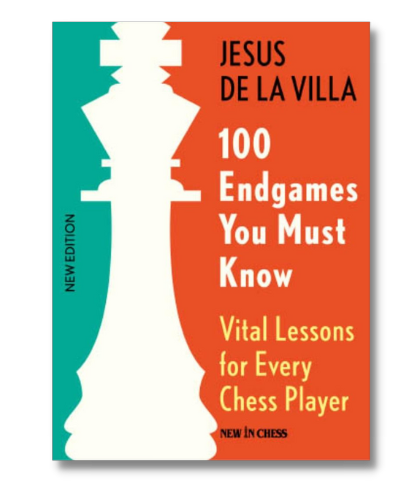Book Review of 100 Endgame Patterns You Must Know
“Akiba, if you had lived in the Middle Ages you would have been burnt at the stake. What you do in rook endings can only be described as acts of witchcraft.”
– Rudolf Spielmann addressing Akiba Rubinstein.
100 Endgame Patterns You Must Know is the third book in the series of endgame books by GM Jesus De La Villa. The author describes the relationship of this book to his previous one, 100 Endgames You Must Know, as follows.
“This book is not exactly a continuation of my earlier book 100 Endgames You Must Know. It would be more accurate to say that they complement each other, since 100 Endgames You Must Know concentrates on theoretical endgames, while this book deals precisely with the stage of the game that precedes the appearance of the theoretical endgames.
Beginning with one book or the other, or alternating between them, maybe a matter of experience or taste, but it is probably more systematic to start with the study of theoretical endgames.”
In particular, the current book focuses on the typical mistakes that are made by players who are unfamiliar with the typical endgame patterns.
As a starting point, the author suggests that endgames can be defined as follows.
“I think that a reasonable definition would be to consider as endgames those positions where the player with more material has a maximum of two pieces, provided that one of them is not the queen. This would rule out, among others, positions with queens and bishops, which we can consider borderline and which in many places are studied as endgames; and of course many people will not agree, but it comes very close to the general sense of what an endgame is, and tries to confine it to a classification by material, which for some questions is useful and almost necessary.”
The structure of the book is like his previous book, with different chapters dealing with typical endgame situations, such as pawn endings, minor piece endings, rook endings, and so on. As expected, rook endings are extensively covered due to their frequency in practice. The author has included results from strong chess engines, and also endgame tablebases where appropriate, to ensure that the analysis is accurate. The theory is covered in 100 positions and there are also 100 exercises with detailed solutions for readers to test their knowledge of the material.
The analysis is a combination of prose and variations, and the author has done a very good job of helping readers with plenty of guidelines and tips. For example, when discussing isolated pawns, the author offers the following guidelines.
“In a pawn ending there are two problems for the defender (i.e. the side with the isolated pawn):
- The possibility of creating a lateral passed pawn, and
- The possibility of the attacker’s king invading on one side or the other.
These problems are only serious when the attacker’s king is able to occupy the square directly in front of the isolated pawn.
For the defending side, the most advisable policy is to defend at least one of the enemy king’s two invasion squares with a pawn. The other policy might be to defend the invasion square with the king without falling into zugzwang.
In addition, the defender should think about how to place the isolated pawn so as not to allow the creation of a passed pawn.”
Two examples from the books are given below, with annotations from the books.
100 Endgame Patterns You Must Know: Example 1
100 Endgame Patterns You Must Know: Example 2
In conclusion, this is an excellent book on practical endgames and the typical mistakes that players make in endgames. The book can stand alone as an endgame book or as a complement to the author’s previous endgame book.
Have any thoughts or questions? Let us know in the comments below!
- New Release: Chess Analysis – Reloaded - March 9, 2024
- Review: The Art of The Endgame – Revised Edition - February 14, 2024
- Review: Study Chess with Matthew Sadler - December 13, 2023



